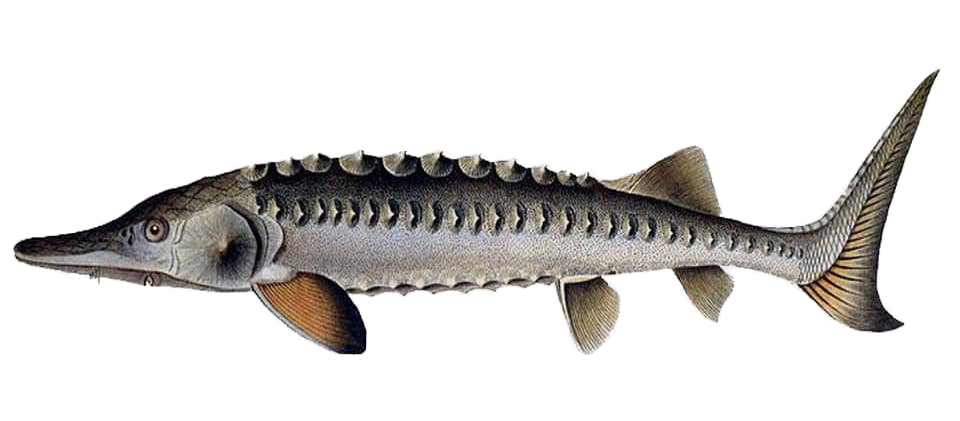The lake sturgeon
Scientific name: Acipenser fulvescens
Size (length): 35 to 55 inches
Weight: 11 to 77 lb
Body shape: Short and elongated, torpedo-shaped.
Lake sturgeon is an impressive fish that measures between 35 and 55 inches. Its weight varies between 11 and 77 pounds. It’s a big fish that seems to have come straight from prehistoric times. This is a species that lives for a very long time: some females have been counted at over 80 years of age! This is a rare catch found in the Great Lakes and western St. Lawrence. It is now and since 2006, an endangered species. This is why it is mandatory to fish under release conditions.
Description & lifestyle
These large fish are characterized by their long snout with four long appendages, edentulous jaws and five rows of bone plates on their bodies. The upper lobe of the fin is longer and finer than the lower lobe. Lake sturgeon have virtually no opponents in the water. Its skin forms a protective layer that effectively protects it from other fish. Only sea lampreys seem to be able to attack this fish. The back and sides of this fish are brown and grey. As for the belly of this fish, it is all white. In young lake sturgeon, large dark spots are observed on the snout above the fins. Sturgeons are found at a depth of 5 to 9 m in the water. Sometimes they sometimes stand on the mud.
Lake sturgeon search for food in the bottom of the water. With its specially designed tubular jaw, it feeds on a wide range of small species such as leeches, molluscs, aquatic insect larvae, fish eggs and certain plant species. As spawning begins, the Lake Sturgeon completely stops feeding. Spawning begins in May and ends in June. Fish eggs are randomly dispersed and attach to algae or other solids in the water. After a few weeks, the young fish are adults in the making.

